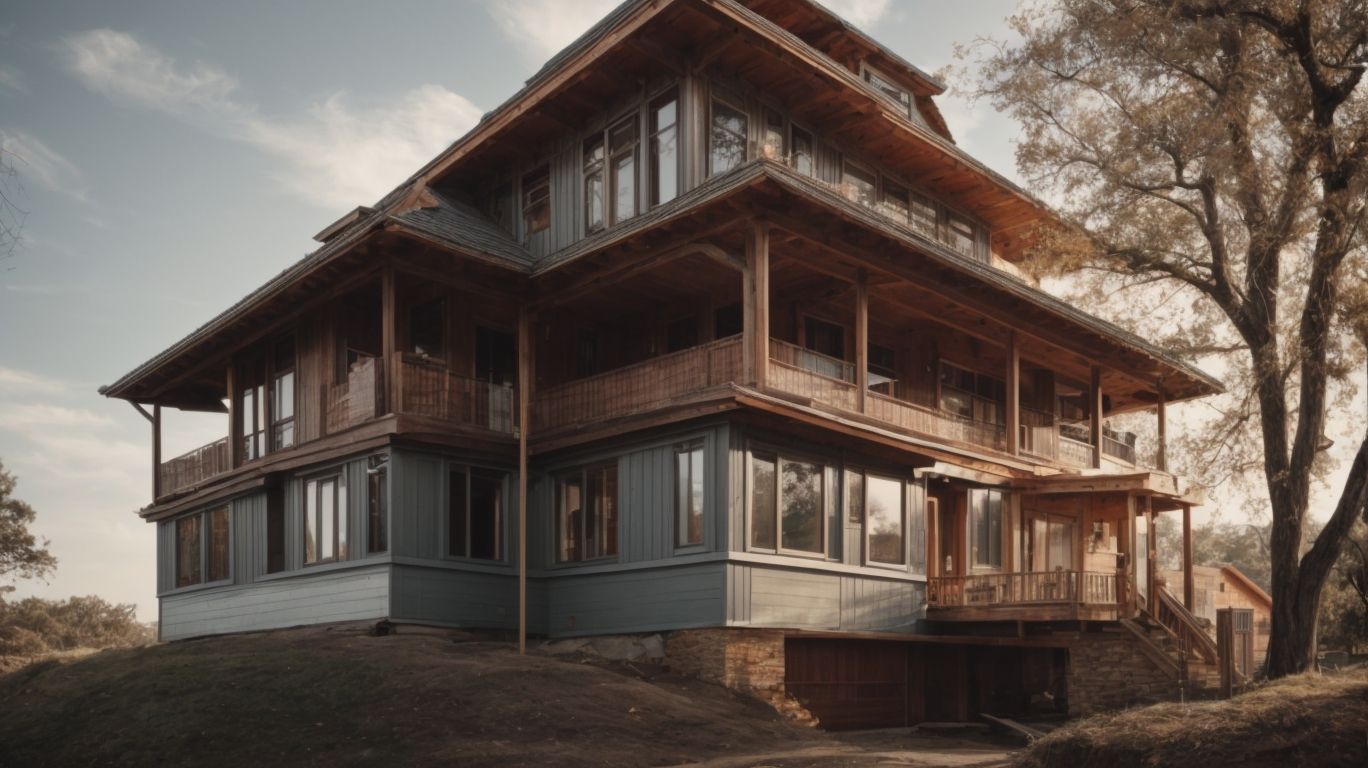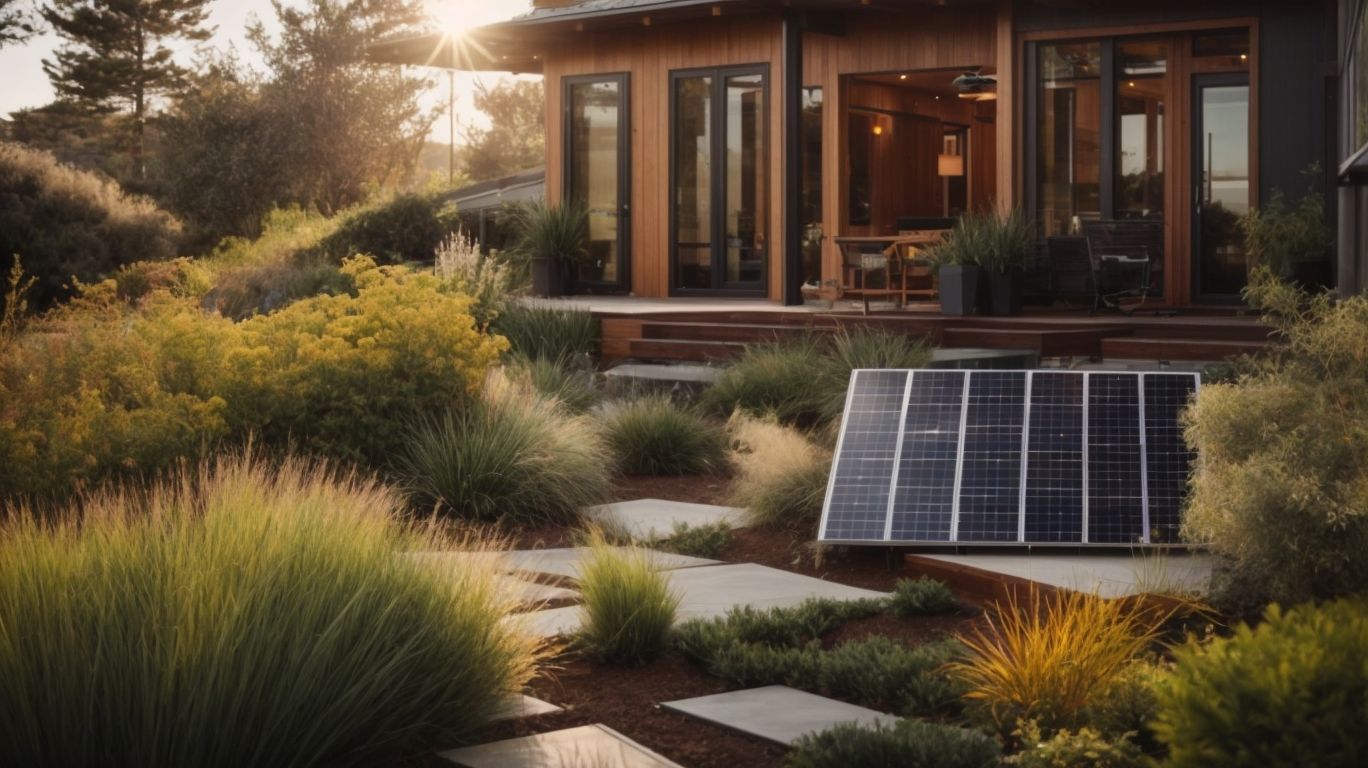
Expanding Upwards: The Unique Benefits of Second Story Additions
Are you looking to increase your living space without sacrificing your yard space or facing the hassle of moving?
Second story additions might be the perfect solution for you. We will explore the various reasons why choosing a second story addition could be beneficial for your home.
From increasing your living space to adding value to your property, we will discuss the different types of second story additions, the steps involved in the process, as well as the costs and considerations to keep in mind.
Let’s dive in and explore the unique benefits of expanding upwards with second story additions.
What Are Second Story Additions?
Second story additions involve expanding upwards on an existing structure to create additional space, which requires meticulous architectural design and a well-planned construction process.
By opting for a second story addition, homeowners can significantly increase their living area without sacrificing yard space. This type of expansion also allows for better utilization of land in densely populated areas, helping to maximize property value.
When considering the architectural design for a second story addition, it’s crucial to ensure that the new level seamlessly integrates with the existing structure in terms of aesthetics and functionality. The construction process typically involves securing permits, reinforcing the foundation, erecting the framework, and finally, completing the interior finishes to turn the vision into reality.
Why Choose Second Story Additions?
Opting for second story additions can offer numerous advantages such as increased living space, enhanced property value, and the luxury of additional space for various purposes.
Not only do second story additions provide more room to accommodate growing families or create a separate living area for guests, but they also elevate the aesthetic appeal of the property.
The additional space can be utilized for bedrooms, home offices, recreational areas, or even a private retreat. Expanding vertically can often be more cost-effective than moving to a larger home, making it a smart investment that adds substantial value to your property.
Increase Living Space
One of the primary reasons to opt for second story additions is to increase living space, allowing for the incorporation of a functional layout that optimizes space utilization and enhances the overall comfort of the home.
By expanding upwards, homeowners can significantly increase their square footage without sacrificing valuable outdoor space. This added room provides ample opportunities to create designated areas for various activities, such as a home office, additional bedrooms, or a cozy reading nook.
A well-designed second story addition allows for better separation of living spaces, providing more privacy and better-defined areas for different functions within the home. Efficient space utilization in a multi-level dwelling can lead to a more organized and spacious living environment, accommodating the evolving needs of a growing family or changing lifestyle.
Maintain Yard Space
Second story additions enable homeowners to maintain their yard space while enhancing the exterior appearance of their property and increasing natural light penetration into the house.
By opting for a second-story addition, residents can make the most of their existing yard space without compromising on the size of their living area. These additions provide an opportunity to create a more visually appealing facade for the home, often adding architectural interest and curb appeal. The additional height from the second floor also allows for more windows, skylights, and other design elements that facilitate the entry of natural light, creating a brighter and more inviting interior environment.
Add Value to Your Home
Investing in second story additions can significantly add value to your home, boosting its real estate value and potential resale value in the property market.
Adding a second story not only increases the available living space but also enhances the overall aesthetic appeal of the property, making it more attractive to potential buyers. This expansion can lead to a higher selling price due to the added square footage and improved functionality of the home. The addition of a second story often aligns with current market trends, appealing to buyers looking for more spacious and versatile living arrangements, further elevating the property’s desirability and competitiveness in the real estate market.
Avoid Moving Costs
By opting for second story additions, homeowners can avoid the significant expenses associated with moving to a new property, making it a cost-effective home renovation option with considerable investment potential.
Adding a second story to an existing home allows homeowners to maximize their current living space without incurring the high costs of relocating. Cost estimates for second story additions typically vary depending on factors such as the size of the project, materials used, labor costs, and any additional features desired.
When compared to the expenses of purchasing a new house, these renovation projects often present a more financially feasible option. The increased square footage and potential rise in property value that come with second story additions offer long-term financial benefits to homeowners.
What Are the Different Types of Second Story Additions?
Second story additions come in various forms, including full second story additions, partial additions, and bump-out additions, each offering unique benefits and considerations for homeowners.
Full second story additions involve adding an entire new level onto an existing home, providing significant extra living space. This type of addition typically involves a complete structural renovation and can be more costly than other options but offers the most substantial increase in square footage.
Partial additions, on the other hand, focus on extending specific areas of the second floor, such as adding extra bedrooms or a master suite.
Bump-out additions are smaller in scale and involve expanding a particular room outward, providing more space without the need for a full second story construction.
Full Second Story Addition
A full second story addition involves significant floor plan changes, meticulous staircase design, and considerations for various roofing options to seamlessly integrate the new level with the existing structure.
When undertaking a full second story addition, it is crucial to carefully plan out the layout to ensure that the new space complements the lower level seamlessly. This may involve reconfiguring rooms, adding new amenities, and optimizing the flow of the living space for enhanced functionality.
Staircase design becomes a key architectural element in connecting the two levels harmoniously, requiring attention to safety, aesthetics, and space efficiency. The choice of roofing materials plays a vital role in both the structural integrity and overall appearance of the expanded home.
Partial Second Story Addition
A partial second story addition involves targeted interior remodeling, strategic enhancements for natural light, and a defined construction timeline to efficiently integrate the new space with the existing structure.
- One key aspect of interior remodeling in a second-story addition is ensuring a seamless transition of aesthetics and functionality between the existing space and the newly added area. By carefully selecting materials and finishes that complement the overall design scheme, the continuity of the home can be maintained.
- Natural light optimization strategies play a vital role in creating a bright and inviting atmosphere in the added space. Incorporating features like skylights, large windows, or glass doors can amplify the feeling of spaciousness and connection to the outdoors.
- Adhering to a structured construction timeline is crucial to keep the project on track and within budget, ensuring that each phase progresses smoothly and efficiently.
Bump-Out Second Story Addition
A bump-out second story addition offers customization options, enhances the aesthetic appeal of the property, and bolsters home equity by creating additional living space with unique design features.
This type of addition allows homeowners to personalize their space according to their needs and preferences, whether it’s adding a cozy reading nook, a spacious master suite, or a home office with abundant natural light. The expanded living area not only increases comfort and functionality but also adds value to the property. From modern finishes to traditional charm, the design possibilities are endless, offering a chance to tailor the space to match the existing architectural style seamlessly.
What Are the Steps for Adding a Second Story?
Adding a second story to your home involves crucial steps such as consulting with a contractor, obtaining necessary permits, evaluating structural considerations, meticulously planning the construction process, and ensuring compliance with building codes.
- Contractors play a key role in the project by overseeing the construction work, coordinating with architects and engineers, and managing the day-to-day operations.
- As the second story addition requires significant structural changes, a thorough assessment is essential to ensure the existing foundation can support the additional load.
- Detailed construction planning is crucial to coordinate tasks, secure materials, and adhere to timelines.
- Meeting permit requirements is vital to avoid any legal issues and ensure that the construction meets safety and quality standards.
Consult with a Contractor
The initial step in adding a second story is to consult with a reputable contractor who possesses the necessary experience, ensuring homeowner satisfaction and a smooth construction process.
This collaboration is vital as it sets the foundation for a successful project that aligns with the homeowner’s vision. A qualified contractor brings expertise in structural considerations, building codes, and design elements specific to second story additions. Their experience allows them to navigate any challenges that may arise during the construction phase, ensuring efficient problem-solving and timely completion. By fostering a collaborative partnership with the homeowner, the contractor can incorporate their preferences while offering valuable insights and solutions to enhance the overall outcome.
Obtain Permits and Approvals
Securing the essential permits and approvals is a critical phase when adding a second story, involving compliance with building regulations, navigating the permitting process, and adhering to zoning regulations for seamless project execution.
When pursuing a building permit for a second-story addition, you must typically provide detailed architectural plans, structural calculations, and specifications to ensure compliance with safety and structural integrity standards.
Once the necessary documentation is submitted, the permitting office will review the plans to verify that they meet the local building codes. This process can vary in duration depending on the complexity of the project, but generally takes several weeks to a few months.
It’s crucial to strictly adhere to zoning regulations regarding setbacks, height restrictions, and design aesthetics to avoid delays or potential legal issues during construction.
Prepare the Existing Structure
Preparation of the existing structure involves assessing structural integrity, evaluating load-bearing components, and aligning the renovations with current housing market trends to ensure the long-term stability and value of the property.
By conducting thorough structural assessments, homeowners can identify any weaknesses or potential issues that could affect the feasibility of a second-story addition. It is vital to verify that the foundation, walls, and supporting structures can accommodate the additional weight and design requirements.
Keeping abreast of housing market trends helps in tailoring the renovation project to suit the preferences of potential buyers in the future, enhancing the property’s market value. Considering these factors early on can prevent costly renovations or marketability issues down the line.
Build the Second Story
The construction phase of adding a second story involves modernization techniques, the selection of high-quality construction materials, and meticulous attention to detail to bring the architectural design to life.
In order to achieve a seamlessly integrated second story addition, it is essential to consider the modernization aspects which often involve incorporating energy-efficient features, smart home technology, and sustainable building practices.
The choice of construction materials plays a vital role in not only enhancing the aesthetic appeal but also ensuring structural integrity. Opting for durable and eco-friendly materials such as steel framing, engineered wood, and energy-efficient windows can significantly impact the overall quality and longevity of the addition.
Precise execution of the construction process is paramount to ensure that every detail aligns with the architectural vision and regulatory standards.
Finish the Interior
Completing the interior of the second story involves selecting premium finishes, designing functional interior staircases, and optimizing room layout to create a cohesive and aesthetically pleasing living space.
When it comes to the interior finishing phase of second story additions, attention to detail is crucial in ensuring that the space not only looks stunning but also functions efficiently. Quality finishes, such as hardwood flooring, quartz countertops, and custom cabinetry, can elevate the overall ambiance of the second story.
In terms of staircase design considerations, the placement, material, and style of the staircase play a vital role in the flow and accessibility of the upper floor. Strategic room layout planning involves maximizing space utilization, ensuring proper lighting, and promoting a harmonious flow between rooms.
What Are the Costs and Considerations for Second Story Additions?
Before embarking on second story additions, it is crucial to meticulously budget for the project, assess the construction budget, and evaluate the potential return on investment to make informed financial decisions.
This process involves estimating all the expenses associated with adding a second story to your home, including materials, labor, permits, and any unforeseen costs that could arise during construction.
Setting a realistic budget from the outset can help you manage expenses and prevent overspending. Conducting a thorough evaluation of the potential return on investment is also essential to determine if the cost of the project aligns with the expected increase in property value.
By carefully considering these financial factors, homeowners can ensure that their second story addition project remains within budget and delivers a satisfactory return on investment.
Budgeting for the Project
Effective budgeting for a second story addition entails obtaining accurate cost estimates, establishing a realistic construction timeline, and implementing robust project management strategies to ensure the project stays on track financially and temporally.
Following an initial assessment of the scope of work, it is crucial to collaborate with contractors and suppliers for detailed pricing. Keeping in mind potential contingencies, design changes, and market fluctuations, accurate cost estimates serve as the foundation of a sound budget.
When creating a construction timeline, factors like permit approvals, material availability, weather conditions, and labor scheduling must be considered. A well-structured timeline helps in avoiding delays and keeping the project on schedule.
Efficient project management involves clear communication, proactive issue resolution, and careful monitoring of expenses to ensure the successful completion of the second story addition within the set budget and timeframe.
Potential Challenges and Solutions
Second story additions may pose challenges related to structural support requirements, project management complexities, and alignment with current housing market trends, necessitating proactive solutions and strategic planning.
- Structural support needs are crucial during second story additions to ensure the existing foundation can withstand the additional weight. This often involves reinforcing the foundation, walls, and ceilings to maintain the structural integrity of the property.
- Managing a project involving a second story addition can be complex, requiring coordination of various contractors, permits, and timelines. Considering the fluctuating demands of the housing market is essential to make informed decisions about the design, size, and features of the added level to align with current buyer preferences and maximize property value.
Choosing a Contractor
Selecting the right contractor for second story additions is crucial, requiring a balance of experience, project management proficiency, and a keen eye for design elements to ensure a successful and satisfactory outcome.
When embarking on a second story project, the contractor plays a pivotal role in bringing your vision to life. Experienced contractors bring a wealth of knowledge and expertise to the table, understanding the complexities involved in vertical expansions. Their project management capabilities streamline the construction process, ensuring timelines are met and potential challenges are addressed promptly. Attention to design elements is essential to seamlessly integrate the new addition with the existing structure, creating a cohesive and aesthetically pleasing outcome that enhances both the functionality and visual appeal of your home.
Timeframe for Completion
Establishing a realistic timeframe for the completion of second story additions involves optimizing space, effective project management, and exploring innovative home expansion ideas for a timely and successful project execution.
Considering space optimization strategies is crucial when planning a second story addition, as it directly impacts the layout and functionality of the new space. By carefully assessing the existing structure and identifying areas for improvement or consolidation, homeowners can make the most efficient use of the available square footage.
Efficient project management practices, such as setting clear milestones, assigning tasks to qualified professionals, and monitoring progress regularly, are vital for staying on track and ensuring timely completion.
Creative home expansion concepts, like incorporating natural light sources, utilizing multi-functional furniture, and implementing sustainable design elements, can also enhance the overall appeal and functionality of the added space.




No Comments